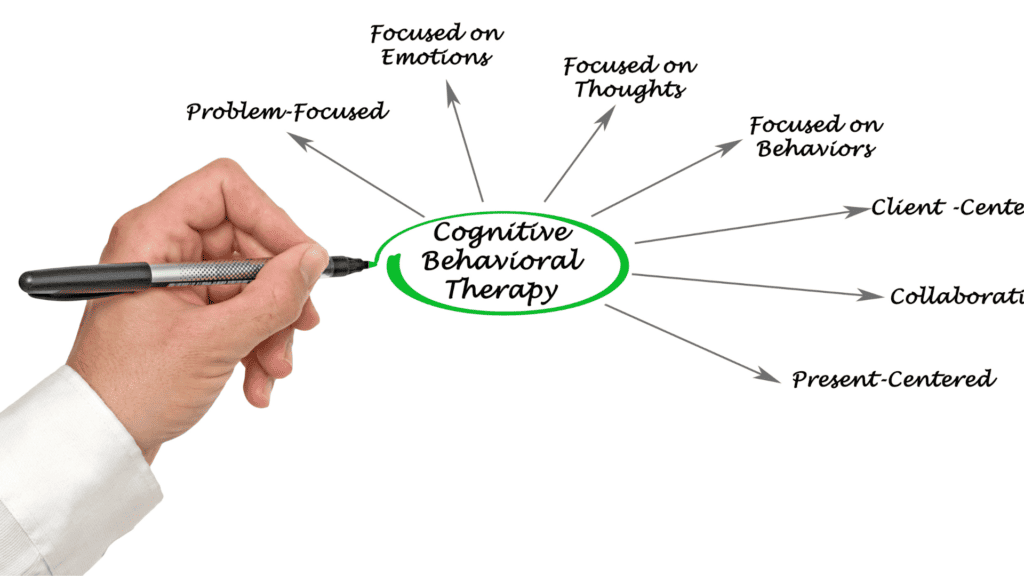Communication Strategies: Ensuring Safety in Trauma Therapy Sessions
Have you ever wondered how to talk about trauma in therapy? Addressing trauma is a crucial aspect of mental health treatment, providing an opportunity for healing and growth. However, broaching this sensitive topic requires a careful and compassionate approach. In this blog, we’ll delve into the significance of discussing trauma in therapy and explore the delicate nature of these conversations. Creating a safe space is paramount, fostering an environment where individuals feel supported, understood, and empowered to navigate their experiences. Join us on this journey as we unravel the key strategies for safely navigating discussions about trauma in the therapeutic setting
What is Trauma?
Trauma is a result of experiencing or witnessing a disturbing event that can lead to several symptoms, like post-traumatic stress disorder (PTSD). Trauma can significantly affect one’s mental health, resulting in flashbacks, feelings of vulnerability, and heightened empathy towards others. People who have experienced trauma may also have difficulty sleeping and concentrating and often feel overwhelmed by their emotions. It is essential to seek professional help to cope with trauma and prevent it from affecting the quality of life. There are various therapies available that can help manage symptoms and provide support to individuals struggling with trauma.

Creating a Safe Therapeutic Environment
The journey of discussing trauma in therapy unfolds within the parameters of a safe and secure therapeutic environment. This pivotal stage sets the tone for the therapeutic alliance and lays the foundation for the delicate conversations that follow.
Importance of Trust Between the Therapist and Client
Trust is the bedrock of any therapeutic relationship, especially when addressing trauma. Building and maintaining trust create a space where clients feel comfortable sharing their most vulnerable experiences. Therapists play a crucial role in fostering this trust, demonstrating empathy, authenticity, and a genuine commitment to the client’s well-being.
Confidentiality and Its Role in Promoting Openness
Confidentiality is a cornerstone in therapy, ensuring clients’ disclosures remain protected. Emphasizing the strict confidentiality of the therapeutic space encourages openness. Clients need assurance that their narratives will be treated with the utmost respect and privacy, enabling them to delve into the depths of their trauma without fear of judgment or breach of trust.
Establishing Boundaries for a Secure Space
Boundaries delineate the therapeutic terrain, creating a safe and predictable client space. Therapists must communicate clear and consistent boundaries to instill a sense of security. These boundaries serve as guidelines for the therapeutic process, ensuring the therapist and client understand their roles and responsibilities. A secure space with well-defined boundaries fosters an environment where clients can explore their trauma without feeling overwhelmed or exposed.
Building Rapport and Trust
Establishing a robust therapeutic alliance is paramount when delving into discussions about trauma. Techniques for fostering this alliance involve creating a space where clients feel seen and heard. Effective communication skills play a pivotal role; therapists must actively listen, ask open-ended questions, and convey genuine interest. Demonstrating empathy and validation are linchpins in building trust—acknowledging a client’s emotions without judgment fosters a sense of security. These elements collectively form the scaffolding of a strong therapeutic rapport, paving the way for clients to navigate the intricacies of their trauma within the safe confines of the therapeutic relationship.
Assessing Readiness for Trauma Work
Navigating the terrain of trauma in therapy requires a nuanced understanding of a client’s readiness to engage in the therapeutic process. Recognizing signs of this readiness is the first crucial step. It involves observing subtle cues, such as increased self-awareness or expressed motivation to explore traumatic experiences.
Recognizing Signs of Client Readiness
Clients often drop hints that they are prepared to delve into their trauma. This could manifest as an increased willingness to share personal experiences or a demonstrated commitment to attending therapy regularly.
Exploring Coping Mechanisms and Self-Regulation Strategies
Before embarking on trauma-focused therapy, it is essential to explore and strengthen a client’s coping mechanisms and self-regulation strategies. This ensures they have the tools needed to navigate the emotional challenges that may arise during the process.
Collaborative Goal-Setting for Trauma-Focused Therapy
Engaging clients in collaborative goal-setting empowers them to actively participate in their healing journey. Setting realistic and achievable goals aligned with the client’s pace establishes a roadmap for trauma-focused therapy. This collaborative approach fosters a sense of agency and control, contributing to a more positive therapeutic experience.

Utilizing Trauma-Informed Techniques
Navigating trauma in therapy demands a specialized toolkit of trauma-informed techniques. These approaches prioritize the client’s safety, empowerment, and collaboration, ensuring a secure environment for exploring traumatic experiences. Here are five essential techniques:
- Psychoeducation on the Trauma Process: Offering clients insight into the physiological and psychological aspects of trauma helps demystify their reactions. Understanding the nature of trauma promotes a sense of control over their experiences.
- Grounding Techniques: Incorporating grounding exercises helps clients stay connected to the present moment during intense emotional experiences. Techniques like deep breathing or sensory awareness provide a tangible anchor amidst the emotional turbulence.
- Integration of Evidence-Based Modalities: Techniques such as Eye Movement Desensitization and Reprocessing (EMDR) or Cognitive-Behavioral Therapy (CBT) offer evidence-based interventions tailored to effectively address trauma’s complex layers.
- Adjusting Pacing Based on Client Needs: Recognizing and respecting individual pacing is crucial. Some clients may require a slower, phased approach to discussing trauma, while others may benefit from a more accelerated progression.
- Incorporating Relaxation Techniques: Teaching and encouraging clients to use relaxation techniques, such as progressive muscle relaxation or guided imagery, promotes emotional regulation and aids in managing anxiety associated with trauma discussions.
Addressing Resistance and Avoidance
Addressing trauma in therapy can elicit a range of reactions from clients, including resistance and avoidance. Recognizing these responses and skillfully navigating through them is crucial to facilitating a safe therapeutic space.
- Understanding Common Reactions to Discussing Trauma: Clients often exhibit resistance and avoidance as protective mechanisms. Fear, shame, or the anticipation of overwhelming emotions can trigger these reactions. By normalizing these responses, therapists create an atmosphere where clients feel understood, reducing the stigma associated with their defenses.
- Strategies for Gently Challenging Avoidance: Gentle and gradual exploration is key when challenging avoidance. Therapists can employ techniques like psychoeducation, helping clients understand the importance of facing difficult emotions for long-term healing. Creating a sense of agency empowers clients to confront their trauma at a pace that feels manageable.
- Building Resilience Through Therapeutic Interventions: Building resilience is integral to trauma therapy. Therapists collaborate with clients to develop coping mechanisms and emotional regulation skills. Interventions may include mindfulness practices, narrative therapy, or exploring strengths and positive coping strategies. Fostering resilience equips clients to navigate the challenges of addressing trauma and promotes a sense of empowerment.
Managing Emotional Responses
Addressing trauma in therapy often stirs intense emotional reactions, making it crucial to navigate this terrain with sensitivity and care. Managing emotional responses is an art that therapists master to ensure clients feel supported and capable of facing their trauma.
Validating and Normalizing Emotional Reactions
Validating a client’s emotional responses is foundational. By acknowledging the legitimacy of their feelings, therapists create an environment where clients feel heard and understood. Normalizing emotional reactions reduces the burden of shame, fostering a sense of acceptance around the complexities of trauma.
Developing Coping Strategies for Intense Emotions
Equipping clients with effective coping strategies is pivotal in managing emotional intensity. Therapists collaborate with individuals to identify and cultivate coping mechanisms tailored to their needs. These strategies may include mindfulness exercises, breathing techniques, or grounding activities, providing practical tools to navigate emotional turbulence.
Balancing Emotional Exploration with Self-Regulation
Balancing the exploration of emotions with self-regulation is an ongoing process. Therapists guide clients in developing the ability to delve into their trauma while maintaining a sense of emotional stability. This delicate balance ensures that therapeutic sessions are neither overwhelming nor emotionally stifled, allowing for a gradual and sustainable healing journey.
Tips for Talking About Trauma in Therapy Safely
Addressing trauma in therapy demands a nuanced and cautious approach. Here are five essential tips to foster a safe environment for discussing trauma:
- Establishing Trust: Begin by cultivating a foundation of trust. Encourage open communication, actively listen, and convey empathy to create a secure space for clients to share their experiences.
- Gradual Approach: Introduce trauma discussions gradually. Start with less distressing aspects before delving into more challenging details, allowing clients to acclimate to the therapeutic process.
- Psychoeducation: Offer insight into the nature of trauma. Educate clients about common reactions and coping mechanisms, empowering them with knowledge to navigate the emotional complexities.
- Validation and Normalization: Validate and normalize emotional responses. Assure clients that their reactions are understandable, reducing feelings of isolation and shame.
- Collaborative Goal-Setting: Involve clients in goal-setting for trauma-focused therapy. Establish realistic and achievable objectives collaboratively, fostering a sense of agency and empowerment throughout the healing journey.
Navigating discussions about trauma in therapy requires a delicate balance of compassion, collaboration, and resilience. How to Talk About Trauma in Therapy has been explored through the significance of establishing trust, gradual approaches, psychoeducation, validation, and collaborative goal-setting. It’s crucial to recognize that addressing trauma is an ongoing process, with healing unfolding at its own pace. Patience and persistence are paramount as individuals embark on their unique therapeutic journeys. In this understanding space, we acknowledge the strength it takes to confront trauma and invite those seeking support to reach out. If you have any questions or would like to start your healing journey, please don’t hesitate to contact us at 3022136158.





